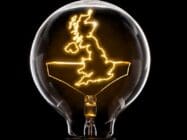
The World Bank Group Board of Directors has approved $268.4 million in financing for the Tunisia-Italy interconnector (ELMED) project that will link energy grids between Tunisia and Europe.
It will also support renewable energy trade “essential to Tunisia’s sustainable development and climate change strategy.”
The Bank said the ELMED project strengthens its longstanding partnership with the Tunisian government in the energy sector.
The project will position the country as a regional hub for renewable energy by connecting Tunisia’s power grid to Italy through a 600MW undersea cable.
“By enabling trade in clean and competitive energy, the project boosts energy security, integrates renewable energy sources, and reduces carbon emissions while making the power sector more financially viable and attracting investments in Tunisia.”
Project to diversify Tunisia’s energy mix
Alexandre Arrobbio, the World Bank country manager for Tunisia, said ELMED is the first World Bank project under the recently announced 2023-27 Country Partnership Framework (CPF).
“Support for the Tunisian government’s 2035 energy strategy, which aims to rapidly increase renewable energy to 35% of total energy consumption, is one of the Bank’s main priorities within the new CPF’s implementation.”
The World Bank Group’s financing will cover part of the overall investments for building a main converter station and associated sub-stations on the Tunisian side, as well as support for implementation of the interconnector.
Technical assistance by the World Bank Group will include helping to establish a renewable energy centre of excellence to position Tunisia as a training hub for renewable energy projects in North Africa.
The ELMED project is also supported by the government of Italy, the European Union, the European Bank for Reconstruction and Development, the European Investment Bank and the German Development Bank KfW.
Additional funding includes $25 million of concessional financing from the Green Climate Fund mobilised through the Sustainable Renewables Risk Mitigation Initiative.
Have you read?
Italy’s Terna invests €11bn in Hypergrid project
Octopus Energy backs Xlinks: ‘world’s longest’ interconnector
Tunisia’s energy grid has an over-reliance on imported fuel sources
In its project appraisal document, the World Bank said Tunisia’s energy sector is characterised by an over-reliance on imported hydrocarbons, high demand growth and waning national resources.
“The country’s recovery in the post-revolution transition drove a strong growth in energy demand.
“Between 2010 and 2015, the country’s energy demand grew by an average rate of 2.2% per year, with demand for gas quadrupling since 1990.
“Electricity consumption also increased at a high pace growing on average by 3.6% annually, with peak demand increasing by 3.9%.”
The country’s energy mix is based on natural gas (55%) and petroleum (44 %) with renewables accounting for only 1% of primary energy, the Banks said.
“With its high dependence on hydrocarbons, the country is vulnerable to disruptions in the international oil and gas markets and to price volatility and to the continuity of its current energy supply options.
“53% of national gas consumption is sourced from Algeria and the government expects a steep decline in its national production of hydrocarbons, from 5.35 Mtep in 2016 to 1.5 Mtep in 2030.”
The World Bank said the structural trend of increasing reliance on hydrocarbon imports and depleting local resources has considerably eroded Tunisia’s energy independence.
“While in 2010 the country relied only on 7% of imports to meet its energy demand, in 2014 imports satisfied more than 40% of national energy needs.
Originally published by Yunus Kemp on ESI-Africa.








